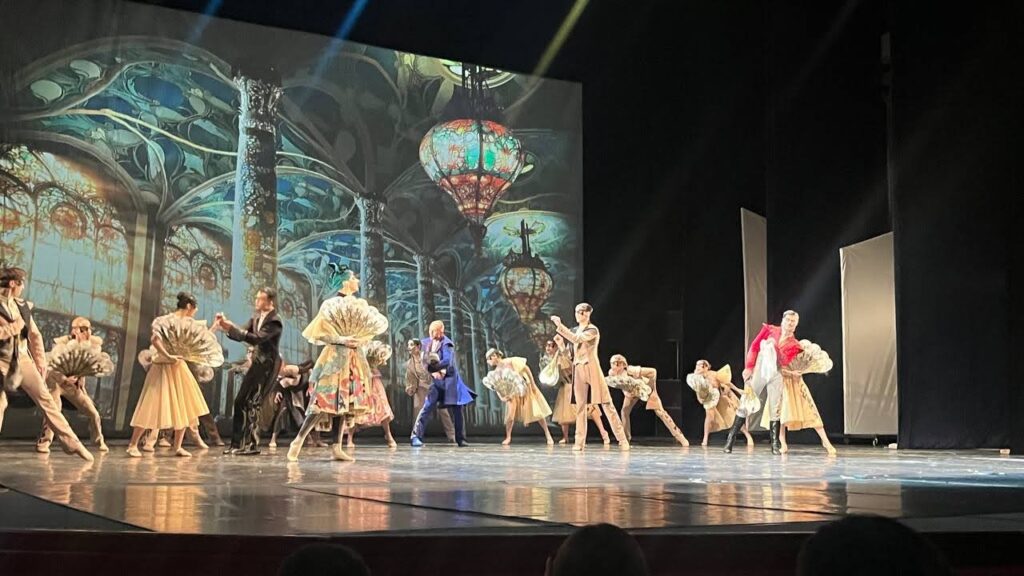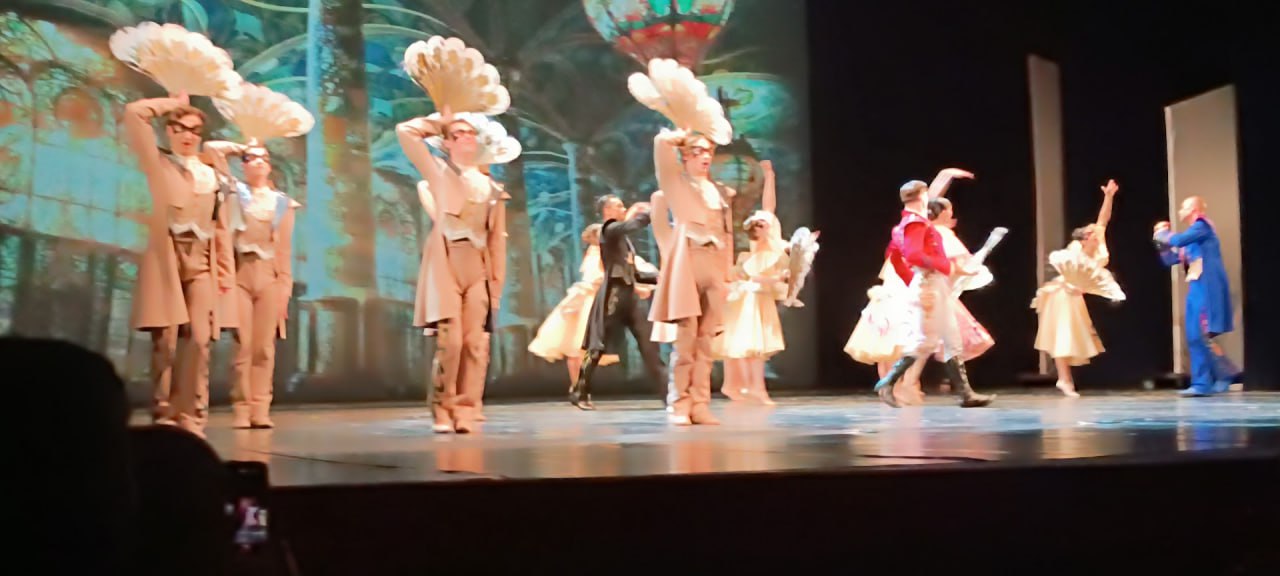Cultural life during wartime

My cultural life has noticeably declined during the war. There are many reasons. The main one — truly talented performers have stopped appearing on our stages. They’re probably afraid, and it’s hard to blame them. Earning a living is good, but what if the price is your life? Is it worth it? Obviously not.
So in the absence of guest performers, our stages have been taken over by local, shall we say, artists. I don’t want to throw shade, but the level of concerts has dropped catastrophically. That’s why we don’t go — to avoid disappointment. But the soul still craves music and spectacle. So we have to choose from what’s available.
There’s no art more exquisite than ballet
Recently, we chose a performance by Radu Poklitaru’s modern ballet company. After all, ballet is a noble spectacle, even in modern form. And the venue was a good and familiar one — the International Center for Culture and Arts (formerly October Palace). By the way, the new name sounds awkward — even the abbreviation “ICCA” reeks of outdated Soviet bureaucracy. “October” was shorter, bolder, and simpler. Time has already shown: long abbreviations don’t catch on — ask any taxi driver.
One of my acquaintances, a lady of rather matronly build and age, once said she doesn’t go to ballet because the sound of pointe shoes tapping on the stage irritates her. Well, that’s a reason, I guess! She does regularly attend operas and classical music concerts though — probably for the prestige. She knows about as much about music as I do about building submarines, but hey — she’s drawn to beauty, and that’s beautiful in itself. In modern ballet, she needn’t worry about pointe shoes — there aren’t any. That, I suspect, is what “modern” really means.
So we went to the premiere of the ballet-comedy “On the Beautiful Blue Danube,” set to the music of Johann Strauss. And I must say, I didn’t regret it for a second. I’d already seen this company before — a few weeks ago we attended their version of “Viy,” which also left a good impression. Aside from a few liberties taken with the libretto, “Viy” swept by in one breath. Ninety minutes flew by. I was curious how they’d handle Viy’s famous eyelids — and they didn’t disappoint. As for the duality of Khoma Brut (split into yin and yang), it added a humorous touch. The music was more electronic than classical — but again, that’s modern for you.
Shortcomings and strengths
With Strauss, such liberties are harder to pull off — which made it all the more interesting. The main drawback: no live orchestra. I get it — it’s expensive, complicated, etc. But a live orchestra in the theatre is irreplaceable. No matter how good the sound engineers are, backing tracks always fall short. I’ve heard a good one — in London — but that’s a whole other story.
Everything else was very solid. The dancers were excellent, and from my layperson’s perspective, the choreography was quite sophisticated. I also appreciated the combination of minimal live sets with video projections — using modern tech isn’t a drawback, it enriches the experience and helps make it more accessible.
As for “The Blue Danube”
There’s definitely more classicism in “The Blue Danube” than in “Viy.” The performance starts with a ballroom scene, impressively simulated by a fairly small troupe. The standout figure — in every sense — was a dashing officer in a red dolman (or whatever they call that uniform). Essentially, he was a “Lieutenant Rzhevsky” type, prowling the ballroom in search of amorous encounters — with the maid, the countess, and an older lady also seeking affection.
That “older lady,” by the way, was actually played by a man — which added a delightful comedic twist and made the character even more memorable.
Read the libretto, folks!
One thing I’ve finally learned — read the libretto before the show. Otherwise, the plot twists, costume changes, and mistaken identities will leave you utterly confused. I bought the program during intermission and it made everything click into place — like a statue settling into its pedestal.
I won’t spoil the full plot — you should see it for yourself. But one theme deserves special mention: the LGBTQ subplot was fully present. A cunning countess and her maid conspire to trick the officer into falling for a pageboy dressed as the countess. The officer hesitates, then gives in — and the two male characters become inseparable, embracing and clearly showing that their “brotherhood” is stronger than female deceit.
Meanwhile, the older lady runs around the dance floor with a pistol, threatening to shoot the officer, the maid, or the countess — whoever crosses her path.
Honestly — it was vivid and well-done.
P.S. Perhaps Strauss would have liked it
I wonder what poor Johann Strauss would’ve made of all this? Then again, maybe he would’ve enjoyed it. It reminded me of an old joke:
At a ball, a lady asks Lieutenant Rzhevsky:
— Lieutenant, who has the biggest balls?
— Obviously, the elephant!
— Ugh, no! The ostrich!
Rzhevsky, thoughtful:
— The ostrich?… No wonder he writes such slow waltzes…
Incidentally, the waltzes weren’t slow at all!


